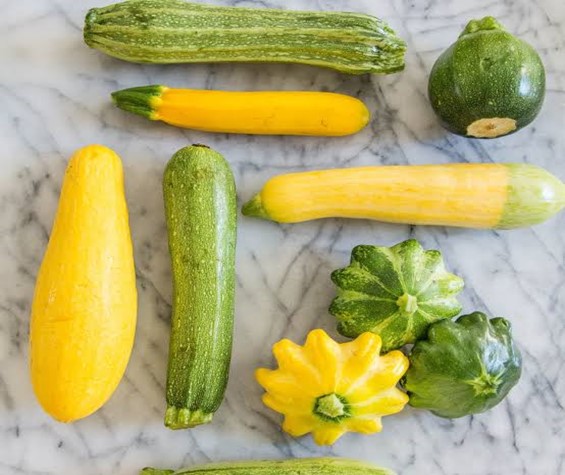Summer – It is not just a season but a celebration, a celebration of various kinds of fruits and vegetables. The moment we hear about summer squash, our mind automatically forms an image of yellow and green filling the whole market.
Many people prefer growing squash in their own homes too.
The summer squash adds nutrition and taste to our food and is very simple to grow and known as prolific producers; the reason being so popular during summers. Only a few plants provide the whole family a good and nutritional meal till the following season.
Buying squash from the market is not a big deal but when we talk about growing squash in our very home or back in that backyard, it does make our minds clouded with some sort of confusion.
Worry not! We have these superbly easier, more than 7 tips, to help you out through your journey of growing squash in your own vegetable garden:
1. Timing is the Key!
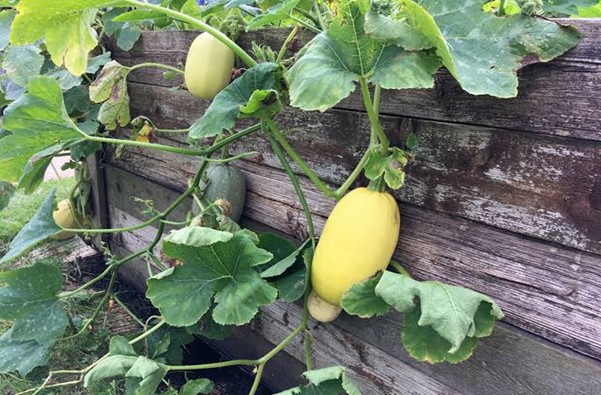
Timing is an important factor you need to consider while growing plants. Same is applicable to growing squash.
Having soil temperature between 70 and 90 degrees is the best time to set out transplants. Usually, seedlings of 3 weeks old, sown indoors, are ready to be brought out.
2. Arming Against the Bugs and Insects
To avoid bug problems, wait until early summer has passed. Summer squash are good to be planted all summer but should be stopped nearly 12 weeks before the first fall frost arrives.
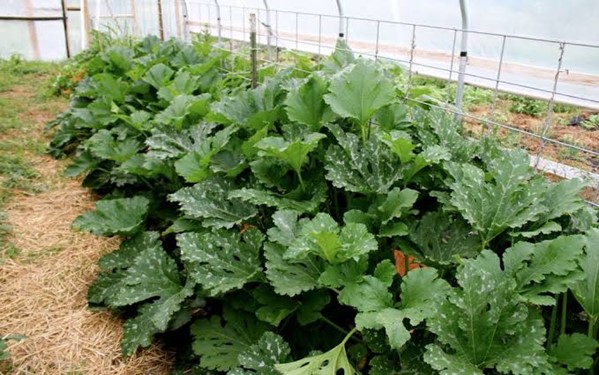
Row covers could be used over transplants once planting is done. This would keep away the squash bugs and help growing squash in a safe environment.
Once you have planted the seeds, you will need to daily scrutinize the plants for avoiding such bugs and other unwanted lodgings.
- Check the quash leaves for any bug eggs. If found, remove using hands.
- If you find Powdery Mildew, throw away the affected leaves. Do not throw them in compost, try other disposal methods. Spraying of neem oil on the other leaves may prevent further damage.
- Pull out any other infected leaves or plants: they will not just produce bad but will infect others too.
- Infestations of whiteflies or aphids with insecticidal soap could be sprayed too for keeping safe the growing squash.
- Lightly rinse the plant in case soap is left on the leaves for, it can burn them while meeting the sunlight.
If you plant squash every year, then you may consider rotation of planting, that is, keep changing the place or space where you grow the squash. For instance, if you grow the squash in the right corner of your vegetable garden then choose the left corner for doing it the next time. This would prevent the bugs and other insects from remembering the place.
3. How to Grow Summer Squash?
Choosing to plant in an area where plenty of sunlight is available can be a good starting point. As a matter of fact, pH between 6.0 and 6.5 are best suited for growing summer squash. Hence, the soil should be well-drained.
Although, summer squash is best when you sow it directly from seed but in case you are using transplantation, you need to take extra precaution such as handling the transplants in a way that their roots are not damaged.
4. Planting the Seeds
When we talk generally,
- Summer squash should be planted 1 inch deep in soil.
- Distance between the seeds should be around 7-8 inch.
- Afterwards, plant thin seedlings out nearly 3 inches apart.
- Consistent watering should help for the best results during harvest.
But there are two varieties such as bush and vining types. Both could be given a more specific approach while planting to have a better harvest.
For bush varieties, a space of 4-6 feet between the rows of plantation should be considered and plants should be 15-20 inches distant for having more room to grow.
For vining types, a space of 6-12 feet between the rows and 12-15 inches apart with plants should be examined. While planting in hills, 6-8 feet should be the key distance between each hill. In case of avoiding the trouble of finding out vining squash amongst the leaves, space them a bit far.
5. The More the Merrier
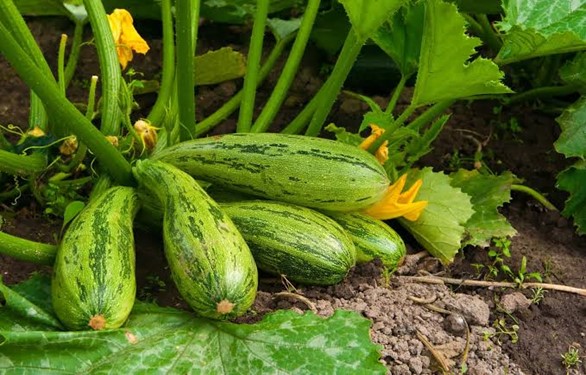
Even google says, “the more people or things there are, the better a situation will be.” Of Course, here this applies to the things- summer squash.
The idea is to plant more than one variety to have multiple options during meals. We do have various kinds of squash from round to long, white to green or yellow, etc. Mostly some of these happen to have a slightly different taste and flavor. Let us take Zucchini for example, it is a bit more medium textured compared to others and one of the most common and popular. Pattypan are other varieties which taste good too.
On the other hand, there happens to be some squash which helps you fight the disease and illness.
6. Give a Hand for Pollination
Although bees are there responsible for the job but in case, it does not happen and you see the female fruits dropping, giving a hand will not cause much.
We can simply figure out the females and males by looking at the base of the flower; If there is a bulge over there then it is a female flower and if there is not any bulge or it is just coming out of a thin stem then it is the male.
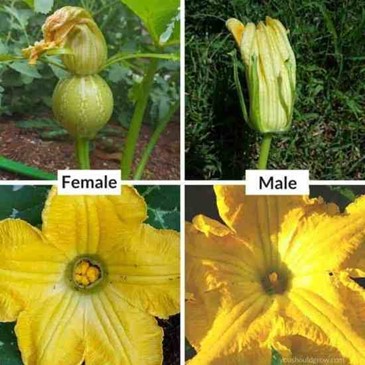
For hand pollination, take the male flower and rub its stamen against the female flower that is the pistil. Prefer doing this early in the morning. Use something like a cotton swab or a little paintbrush to transfer male pollen to the female.
7. How to Harvest?
Best time for harvesting is before the summer squash is fully grown. If not, you could wait until it is fully matured but keep in mind that summer squash, when baby-sized and tender, tastes the best.
Use a small knife for cutting the squash from the stem neatly and not from the main vine. While growing squash, most of the types take up to 40-60 days to reach the harvest moon. Once done, harvesting twice a week would be good enough.
To Keep in Mind: Summer squash such as Cucurbita pepos are harvested during a time when they are not fully matured, that is a time when their skin has not hardened yet and therefore, used fresh. Skin of Zucchini and Yellow squash is easily pierced with fingernails.
8. Storing the Squash
You can freeze and refrigerate the fruit for about a week or so. Freeze the extras for using a while later. Squash can also be placed in a place with moderate amounts of humidity with a temperature of 50-55°F, that is, 10-12° C.
Keep the fruits spaced apart or in a single layer, piling up one on another, may pose threat of infections and end up infecting the whole lot. Also, try to not store in concrete base or with other fruits such as pears and apples.
So, what are you waiting for? You have got all you need to know for growing squash this summer. Get ready with the tools and prepare the soil for eating healthy nutritious, safe food all season. We hope these tips help you in having a fine harvest. For more questions regarding the same check out the FAQ section below.
FAQs
Q. Is Summer Squash Easy to Grow?
Yes, summer squash plants are very easy to grow and highly productive. They just take seven weeks to start producing eatable fruits after planting seeds and keep producing the fruit until the frost.
Q. How Do You Keep Squash Plants Healthy?
Have plenty of sunlight and even watering accessible to your squash plants for a healthy growth. Keep them protected against the infectious bugs and other possible threats. Set a good base for the production.
Q. What Grows Well with Summer Squash?
Radishes, corn, peas, beans, pumpkin, marigolds, and nasturtiums are some plants that grow well with summer squash. Squash and cucumbers, and peas or beans are also very popular for growing together.
Q. What Can You Not Plant with Squash?
Stay away from planting root crops, such as beets, onions, and potatoes any near to squash plants as these may become a hindrance during the harvest season of growing squash.
Q. How Often Should Summer Squash Be Watered?
Squash requires deep watering. So consistent watering is a must. You can deep water the plants once a week or do it after two three days keep the water a bit shallow. The soil should be moist 3-4 inches down. So, do it accordingly.
Q. What Month Do You Plant Squash?
Spring remains the best season for growing squash. It does not grow during frosted seasons.
Q. Can You Overwater Squash?
Overwatering the squash might result in dying or suffering of the plants. Overwatering or too little watering is bad for squash health. Make sure to water them only in the amount they require.
Q. Why Are My Squash Leaves Yellowing?
This might mean that either you are watering the plants too much or too little. Yellowing of leaves is not a good sign. If not stopped early, the whole lot might require disposal.
These were some of the most asked questions when talking about growing summer squash. If you are new to the growing community or trying it for the first time, this guide might serve you as a source of pre-knowledge.
In such a case, you can also buy books or various basic materials which will get you thorough with all aspects of growing squash and consider your first ever self-cultivation.

